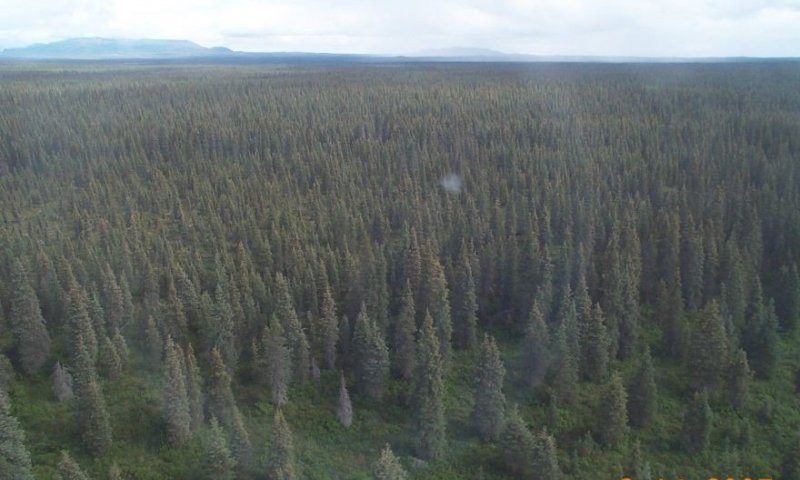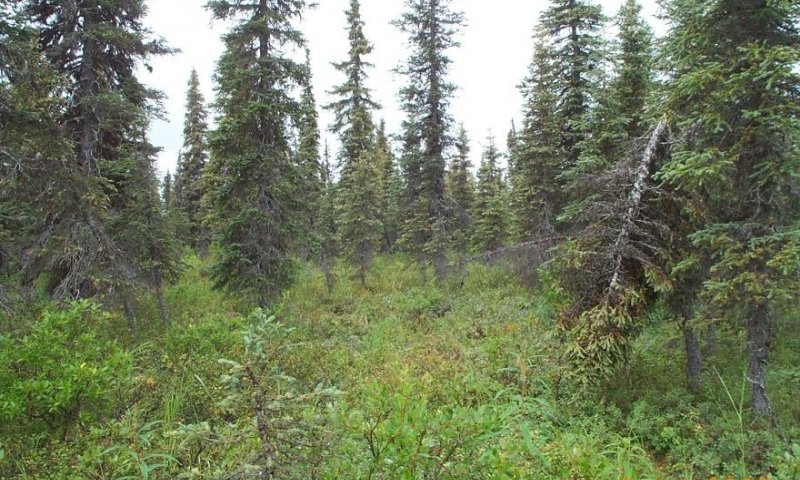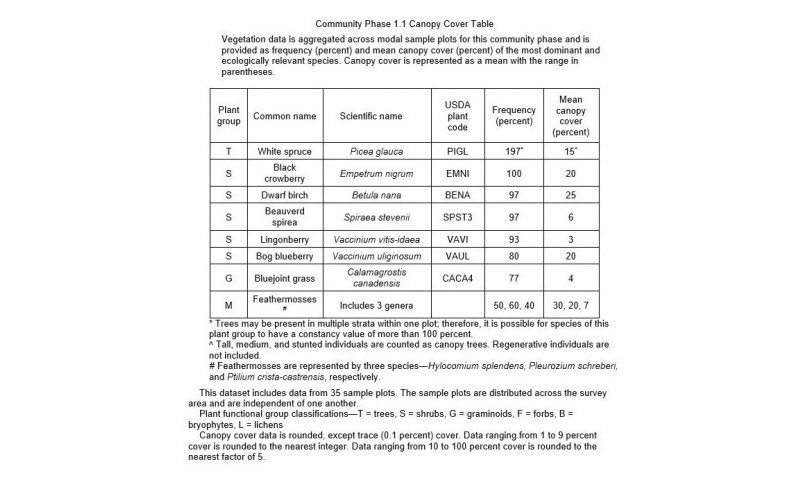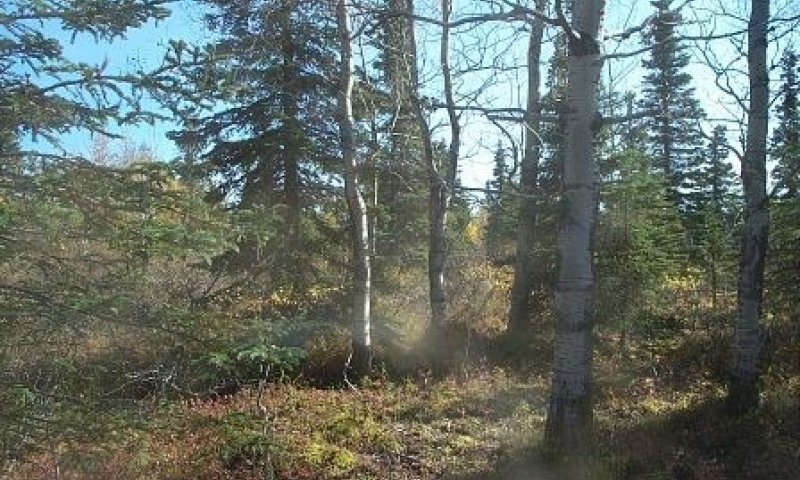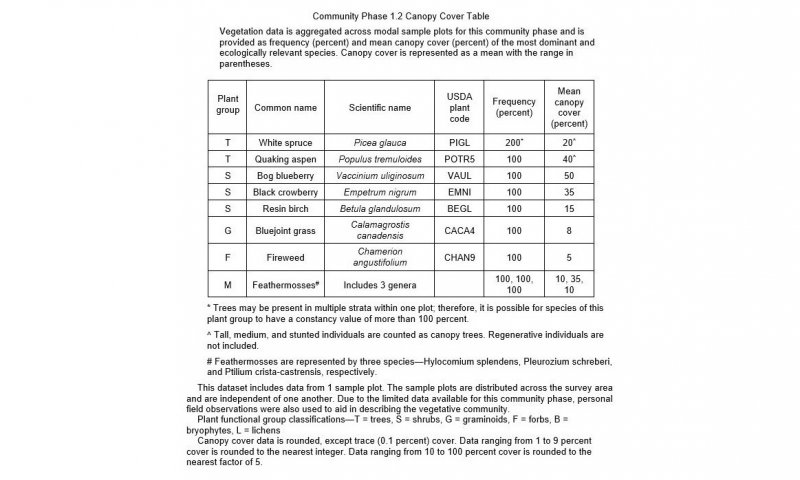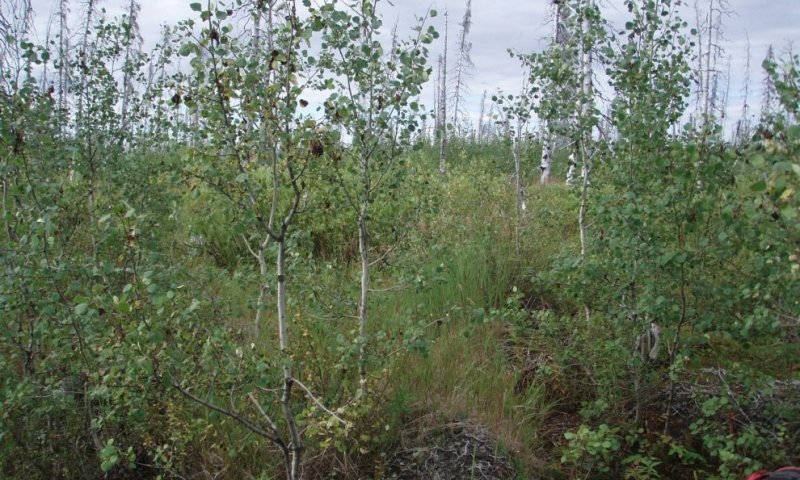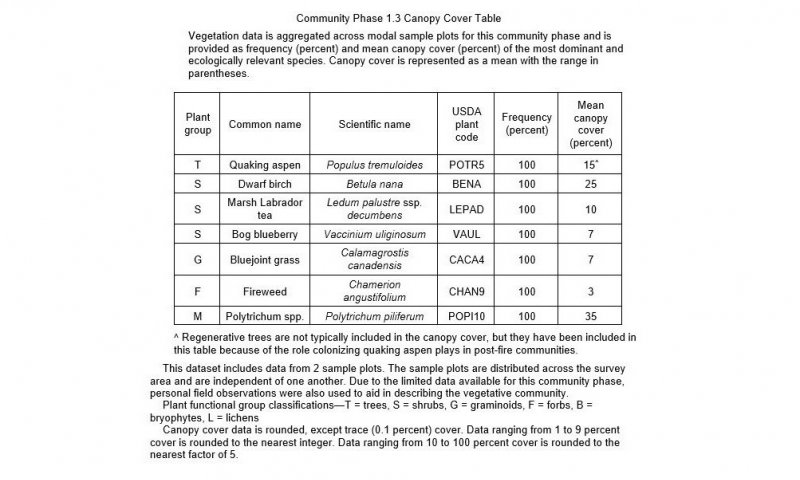

Natural Resources
Conservation Service
Ecological site F236XY157AK
Boreal Woodland Moist Loamy Plains
Last updated: 2/13/2024
Accessed: 12/21/2025
General information
Provisional. A provisional ecological site description has undergone quality control and quality assurance review. It contains a working state and transition model and enough information to identify the ecological site.
MLRA notes
Major Land Resource Area (MLRA): 236X–Bristol Bay-Northern Alaska Peninsula Lowlands
The Bristol Bay-Northern Alaska Peninsula Lowland Major Land Resource Area (MLRA 236) is located in Western Alaska. This MLRA covers approximately 19,500 square miles and is defined by an expanse of nearly level to rolling lowlands, uplands and low to moderate hills bordered by long, mountain footslopes. Major rivers include the Egegik, Mulchatna, Naknek, Nushagak, and Wood River. MLRA 236 is in the zone of discontinuous permafrost. It is primarily in areas with finer textured soils on terraces, rolling uplands and footslopes. This MLRA was glaciated during the early to middle Pleistocene. Moraine and glaciofluvial deposits cover around sixty percent of the MLRA. Alluvium and coastal deposits make up a large portion of the remaining area (Kautz et al., 2012; USDA, 2006).
Climate patterns across this MLRA shift as one moves away from the coast. A maritime climate is prominent along the coast, while continental weather, commonly associated with Interior Alaska, is more influential inland. Across the MLRA, summers are general short and warm while winters are long and cold. Mean annual precipitation is 13 to 50 inches, with increased precipitation at higher elevations and areas away from the coast. Mean annual temperatures is between 30 and 36 degrees F (USDA, 2006).
The Bristol Bay-Northern Alaska Peninsula MLRA is principally undeveloped wilderness. Federally managed land includes parts of the Katmai and Aniakchak National Parks, and the Alaska Peninsula, Becharof, Togiak and Alaska Maritime National Wildlife Refuges. The MLRA is sparsely populated. Principal communities include Dillingham, Naknek, and King Salmon. Commercial fishing in Bristol Bay and the Bering Sea comprises a major part of economic activity in the MLRA. Other land uses include subsistence activities (fishing, hunting, and gathering) and sport hunting and fishing (USDA, 2006).
Ecological site concept
This boreal ecological site is on convex to linear slopes on drift plain talfs, comprised of mineral materials transported by glacier. Site elevation is 20 to 920 feet above sea level. Slopes are nearly level to gentle (0 – 5 percent). Soil hydrology, fertility, and a fire regime shape the vegetation on this site. A deep water table likely discourages recruitment of upland species. Soil development is weak, negatives affecting plant recruitment and growth.
The reference state supports three communities. The reference plant community is characterized as a white spruce woodland (Viereck et al., 1992). It is composed of a white spruce canopy with an open understory of ericaceous shrubs, grasses, mosses and lichens. Two early communities are the result of a fire cycle comprised of often low-intensity burns.
Associated sites
| R236XY109AK |
Subarctic Low Scrub Peat Drainages R236XY109AK described organic depressions on drift plains. These are features on the plains described by this site. |
|---|---|
| F236XY115AK |
Boreal Forest Loamy Moist Slopes F236XY115AK describes rises on drift plains. Rises have soils that do not support a water table, have aquic soil conditions or undergo cryoturbation. This differs from the soil associated with F236XY157AK and results in different vegetative communities. |
Similar sites
| F236XY115AK |
Boreal Forest Loamy Moist Slopes Both sites are on drift plains. F236XY115AK is on rises, which are drier than the talf positions of this site. Site and soil conditions create a woodland in this site and a forest on F236XY115AK. |
|---|
Table 1. Dominant plant species
| Tree |
(1) Picea glauca |
|---|---|
| Shrub |
(1) Betula nana |
| Herbaceous |
Not specified |
Click on box and path labels to scroll to the respective text.
Ecosystem states
State 1 submodel, plant communities
| 1.1A | - | Fire. |
|---|---|---|
| 1.2A | - | Fire recovery. |
| 1.2B | - | Fire. |
| 1.3A | - | Fire recovery. |
